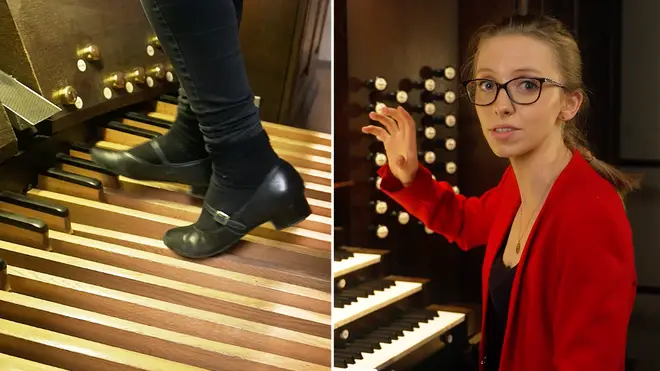How does the organ work, and what are the different parts? Anna Lapwood explains
7 July 2022, 17:23 | Updated: 23 September 2022, 16:29

How does a pipe organ actually work? | Anna Lapwood | Classic FM
Organist Anna Lapwood presents a beginner’s guide to the organ – from stops, pedals and manuals to pipes and wind chests.
We meet the brilliant organist Anna Lapwood at St John’s Smith Square, home to a magnificent organ made up of 3,574 pipes, three keyboards for the hands, a pedalboard for the feet – plus a host of stops that create the classic ‘organ sounds’ and imitate the sound of various instruments of the orchestra.
But of course, no single organ is the same. So, what are the elements that you will find on every organ, and how do they differ? Watch Anna’s guide above, and read on to find out more.
How does a pipe organ make a sound?
“On a piano, you press a key down, a hammer hits some strings and that’s how sound is created,” Lapwood says. “But on an organ, it’s all about wind.”
Inside the organ, you’ll find several rows of pipes sitting on top of a wind chest, and a set of bellows will push air into that wind chest. And to control which pipes sound when, Anna says, “we have two main levels of defence”.
She continues: “The first is a slider that correlates with each stop. So, when you pull out a stop, a slider will move into place that then lines up the holes so that air can pass through that set of pipes.
“Our second level of defence is a palette. When you press a key down, the palette moves and allows to flow through that one pipe.”
Read more: Who is Anna Lapwood? Discover her biography and performances

What are the keyboards (or manuals)?
The organ is played from an area known as the console. The console contains anywhere between two and five keyboards, also known as manuals, which control which pipes are used, and to what effect. On the organ at St John’s Smith Square, you’ll find three manuals – the Great, the Swell and the Rückpositiv.
The Great
The main keyboard, the second manual up on most UK and US organs, is the Great. On this particular organ, the Great controls the pipes above the console.
The Swell
The Swell, the top manual, has shutters that allow the organist to control the dynamics with a box on the pedalboard.
The Choir (or Rückpositiv)
The Choir, or the Positif or Rückpositiv, is a smaller division usually placed below or behind the player.
Some organs also feature a fourth and a fifth manual, known as the Echo and the Bombarde.

How do the stops work on an organ?
A stop is firstly defined by its length, Anna explains. “The standard length is eight-foot. If I pull out an eight-foot stop, middle C sounds like middle C. And if I keep my finger held down, push that stop back in and pull out a four-foot, it jumps up the octave. The shorter the pipe, the higher the note.
“And then you get some fun mutations where it doesn’t work by octaves, it does the notes in the middle. And it’s when you start to mix all these sounds together that you get the sounds that you probably most associate with the organ.”
As well as the standard organ sounds – otherwise known as the principles – there are stops that imitate orchestral instruments, including the flute, oboe and even the 15th-century crumhorn.
“On some of the big symphonic instruments, you get even more orchestral sounds,” Anna says. “At the Royal Albert Hall, you’ve got a bass drum inside the organ. It basically is just a big box of toys.”

Organist Anna Lapwood plays an epic Bach Fantasia at the Royal Albert Hall | Classic FM
What do the buttons do on an organ?
There are also buttons, or pistons, positioned below the manual keyboards, which can be used by organists to change registrations.
“Organs are a little bit like computers,” Anna explains. “You can turn up and preset certain things, and programme your computer to bring out the sounds that you want when you want them.”

This is the amazing water organ
What’s the history of the pipe organ?
The organ can be traced back to the 3rd century BC in Ancient Greece, when the earliest water organs came about.
Organs started to appear in churches and Benedictine abbeys in the 10th century, when the world’s first giant pipe organ was installed in Winchester Cathedral.
By the 19th century, the organ was “the most complex manmade machine, until the telephone exchange was invented,” Anna says. “And if we move to the 19th and 20th centuries, that’s when we started to see organs appearing in concert halls, and the organ taking on a more symphonic role.”


























